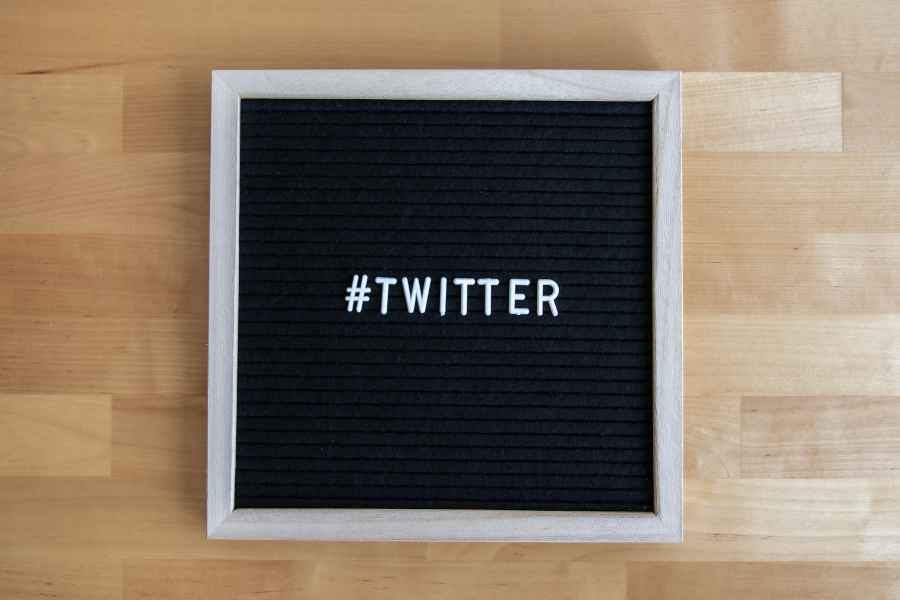AFFILIATE MARKETING
10+ Savvy Strategies for 2024

So you want to learn how to make money on Twitter?
You’re not alone. If you’re going to be spending hours on the social media platform, you might as well learn how to monetize it, right?
That’s why this guide will introduce you to several smart tactics to transform your characters into a steady income stream.
From leveraging the latest features to mastering the art of affiliate marketing, we’ll explore both direct and indirect monetization strategies that you can use to create a Twitter/X income stream.
So, are you ready to turn your Twitter feed into a gold mine?
Let’s unlock the potential of those tweets!
Why Monetize on Twitter?
Twitter (aka X) is a bustling social media platform teeming with opportunities if you want to monetize your online presence.
Initially, Twitter was merely a platform for communication and networking.
Over time, as it grew in popularity, savvy users realized its massive potential for content creators and businesses to not just create content and gather influence but monetize said content and influence. Why?
- Real-Time Engagement and Trends: Twitter’s real-time nature makes it unique. Users can engage with trending topics instantaneously, providing a ripe environment for marketing and promotional activities. This aspect is particularly beneficial for aligning products or services with current events or viral trends, thereby increasing visibility and potential revenue.
- Wide and Varied Audience: Twitter’s diverse user base allows for targeting specific niches. Whether you are an artist, a tech enthusiast, or a fitness fiend, you can find and interact with an audience tailored to your niche. This targeted approach can lead to more effective and profitable engagements.
- Personal Branding Opportunities: Twitter is an excellent platform for building and reinforcing your personal brand. Regularly sharing your expertise and insights can establish you as a thought leader in your industry, leading to increased trust and more monetization opportunities such as sponsorships or collaborations.
- Cost-Effective Marketing Platform: Starting on Twitter doesn’t require a significant financial investment, making it an accessible marketing tool for individuals and small businesses. This cost-effectiveness is particularly useful for those just beginning to explore online monetization.
- Unique Features for Diverse Monetization Strategies: Twitter continuously introduces new features, offering different monetization opportunities. From leveraging a Twitter Space for live conversations to using Super Follows for exclusive content, these features allow for creative and varied revenue streams.
- Accessibility and Ease of Use: Twitter’s user-friendly interface makes it easy for anyone to build a presence and engage with their audience, regardless of their technical know-how. This accessibility is key to its effectiveness as a monetization platform.
In sum, Twitter’s ability to offer real-time engagement, access to a diverse audience, and various monetization features makes it a compelling choice for anyone looking to make money online.
Preparing Your Twitter Account for Monetization

Before diving into the world of monetization on Twitter, it’s crucial to lay a solid foundation. A well-prepared Twitter account sets the stage for successful monetization.
Here’s how to get your account ready:
Create Your Twitter Profile
A polished Twitter profile is your digital storefront, crucial for attracting followers and sponsors alike. Here’s how to craft a profile that’s primed for monetization:
- Professional Profile Picture and Cover Photo: Choose a high-quality profile picture that represents your brand or personality effectively. Your cover photo should complement this, providing a glimpse into your professional world or personal brand.
- Optimized Bio with Keywords: Your bio should be a concise elevator pitch, including keywords related to your niche. This not only helps in SEO but also in attracting the right audience.
- Link to Your Website or Portfolio: If you have a website, blog, or portfolio, include the link in your profile. This allows potential clients or sponsors to learn more about you and your work.
- Pinned Tweet: Use the pinned tweet feature to highlight your most important content. This could be a successful project, a piece of content you’re proud of, or a tweet that best represents your brand.
Grow Your Twitter Following
If you want to make money on Twitter, you’ll need to cultivate an engaged and targeted audience. Here are strategies to grow your Twitter following effectively:
- Engage with Relevant Content: Actively participate in Twitter conversations relevant to your niche. If you’re a graphic designer, for instance, engage with tweets related to design trends, software updates, or industry news.
- Post Content Consistently: Maintain a regular posting schedule. This consistency keeps your audience engaged and helps in building a loyal Twitter follower base. Use scheduling tools to manage your tweets efficiently.
- Collaborate with Others: Collaborate with other Twitter users in your niche. This can be as simple as a shoutout exchange or as involved as co-creating content. These collaborations can expose your profile to a wider audience.
- Use Twitter Spaces: Participate in Twitter Spaces to interact with like-minded individuals and potential followers. This not only increases your visibility but also showcases your expertise in real-time discussions.
By meticulously crafting your profile and strategically growing your following, you lay a strong foundation for monetizing your Twitter presence. This preparation phase is key to ensuring that your monetization efforts are built on solid ground.
Direct Monetization Strategies


Direct monetization on Twitter means earning money directly from your online activities, turning your tweets and interactions into a revenue stream. Here are the key strategies to achieve this:
1. Sponsored Tweets
This involves partnering with brands to tweet about their products or services.
For instance, if you’re a fitness enthusiast, you could collaborate with a sports brand to create sponsored tweets.
It’s essential to choose partnerships that align with your audience’s interests and to disclose sponsored content openly.
2. Affiliate Marketing
You can earn commissions by promoting products through affiliate links in your tweets.
Just remember, the key to successful affiliate marketing is authenticity and relevance to your followers.
3. Selling Products or Services
Use Twitter to direct traffic to your own products or services.
An illustrator might tweet about their custom artwork, linking to their online store. Engaging descriptions and visuals can boost interest and sales.
4. Content Behind Paywalls
Consider offering exclusive content to your followers for a fee.
This could include in-depth guides, special insights, or early access to your content. Twitter’s subscription feature facilitates this kind of monetization.
5. Offering Paid Subscriptions
You can provide subscribers with extra content, such as bonus tweets, access to a community group, or a specialized newsletter, in exchange for a monthly subscription fee.
Each of these direct monetization methods requires a careful balance. It’s crucial to maintain a genuine connection with your audience while exploring these revenue opportunities.
By thoughtfully implementing these strategies, your Twitter account can evolve into a significant source of income.
Indirect Monetization Techniques


Indirect monetization on Twitter involves strategies that don’t generate revenue directly through the platform but use it as a tool to support other income-generating activities.
Here’s how you can implement these strategies:
6. Driving Traffic to Your Website or Blog
Use your tweets to funnel followers to your website, blog, or online store.
For example, if you run a travel blog, sharing captivating snippets from your latest blog post with a link to the full article can increase website traffic and, eventually, ad revenue or sales.
7. Building and Monetizing an Email List
Encourage your followers to sign up for your email list by offering incentives like exclusive content, e-books, or special offers.
Why?
Because an email list lets you directly reach your target audience without depending on platform algorithms.
8. Promoting Your Brand’s Products or Services
If you have a personal brand, use Twitter to enhance it.
Tweet about your latest podcast, webinar, or product line to amplify your brand’s reach.
9. Leveraging Twitter for Networking and Partnerships
Build connections with other professionals in your field.
Engaging with influencers, participating in Twitter chats, and networking can lead to collaborations, guest blogging opportunities, or joint ventures, all of which can indirectly boost your revenue.
10. Using Twitter as a Market Research Tool
Gain insights into your audience’s preferences and trends in your niche.
This information can be invaluable in shaping your products, services, or content strategy to better meet market demands, thereby increasing your overall earnings.
Implementing these indirect monetization strategies requires a focus on nurturing relationships with your audience, understanding their needs, and providing value through your Twitter presence.
While these methods may not generate immediate income, they are crucial for long-term growth.
Advanced Twitter Monetization Features


As Twitter continues to evolve, it introduces advanced features that open new avenues for monetization. These features are designed to help users capitalize on their following and content in more sophisticated ways.
Here are some of the key advanced features you can leverage:
11. Twitter Subscriptions
Previously known as Super Follows, Twitter Subscriptions allow a content creator to offer exclusive Twitter content to their subscribers. This can include subscriber-only tweets, access to special Spaces, and unique badges.
The platform enables various subscription tiers, offering flexibility in how you structure your exclusive Twitter content.
12. Ticketed Spaces
Twitter Spaces, the live audio conversation feature, now allows you to host ticketed events. This is ideal for workshops, live discussions, or exclusive Q&A sessions.
13. Twitter Media Studio
This tool is designed for content creators and publishers, allowing for more advanced management of media on Twitter.
It provides better insights into how content performs, which can be used to optimize tweets for higher engagement and monetization potential.
14. Twitter Ads
Advanced users can explore Twitter Ads to promote their content, products, or services.
While this involves investment, a targeted ad can significantly increase your reach and drive traffic to monetized content or external sites where you make revenue.
When used effectively, these advanced features can enhance your ability to monetize your presence on the platform by offering more engaging ways to generate income.
Overcoming Twitter Monetization Challenges


Monetization always comes with challenges, and that’s true on Twitter as well. Here are some common problems you might see, and strategies to overcome them:
- Debunking the ‘Instant Success’ Myth: One of the biggest misconceptions is that monetization on Twitter can happen overnight. The truth is that it requires time, consistent effort, and strategic planning. Set realistic goals and be prepared for a gradual build-up to success.
- Navigating Algorithm Changes: Twitter’s algorithm can change, affecting how content is displayed and engaged with. Stay adaptable and keep an eye on Twitter updates. Experiment with different types of content and posting times to see what works best under the current algorithm.
- Handling Limited Reach and Engagement: If your tweets are not reaching a wide audience or getting enough engagement, reassess your content strategy. Use Twitter analytics to understand what works and tweak your approach accordingly.
- Balancing Monetization with Authenticity: It’s vital to balance monetizing your account and maintaining authenticity. Avoid overwhelming your followers with excessive sponsored content or promotions. Instead, weave monetization efforts naturally into your content in a way that adds value to your audience.
- Overcoming Saturation in Popular Niches: If you’re in a highly saturated niche, differentiation is key. Find a unique angle or approach that sets you apart from others. This could involve focusing on a sub-niche, developing a distinctive content style, or offering unique insights.
- Dealing with Platform Restrictions and Rules: Be aware of Twitter’s policies regarding monetization, especially around sponsored content and advertising. Ensure your monetization methods comply with these rules to avoid penalties or account suspension.
- Addressing Follower Skepticism with Transparency: Be transparent about your monetization efforts, especially regarding sponsored content or affiliate links. This builds trust with your audience and mitigates any skepticism they might have.
For long-term success, be patient, stay informed, and continuously adapt your strategies to align with both the platform’s dynamics and your audience’s expectations.
How to Make Money on Twitter: Seizing Opportunities for 2024
Learning how to make money on Twitter isn’t about blindly following one path. The platform offers a multitude of avenues for financial success.
The journey to monetizing Twitter depends on the connections you build, the value you provide, and the authenticity you maintain.
Each tweet you send out is an opportunity, a chance to engage, influence, and earn.
So, take these strategies, mold them with your unique voice and vision, and watch as your Twitter account transforms into not just a social platform, but a thriving hub of opportunity and revenue.

![How AEO Will Impact Your Business's Google Visibility in 2026 Why Your Small Business’s Google Visibility in 2026 Depends on AEO [Webinar]](https://articles.entireweb.com/wp-content/uploads/2026/01/How-AEO-Will-Impact-Your-Businesss-Google-Visibility-in-2026-400x240.png)
![How AEO Will Impact Your Business's Google Visibility in 2026 Why Your Small Business’s Google Visibility in 2026 Depends on AEO [Webinar]](https://articles.entireweb.com/wp-content/uploads/2026/01/How-AEO-Will-Impact-Your-Businesss-Google-Visibility-in-2026-80x80.png)















